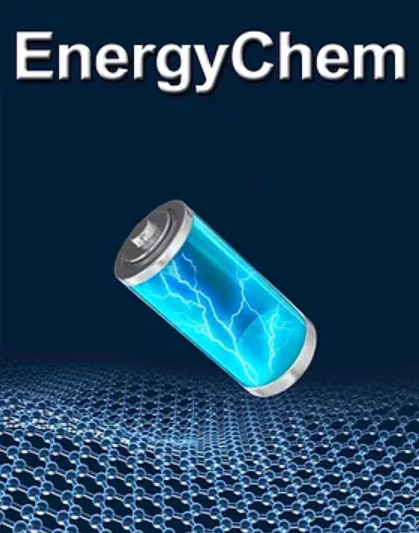开发用于环境温度下二氧化碳还原的电解系统
IF 22.2
Q1 CHEMISTRY, MULTIDISCIPLINARY
引用次数: 0
摘要
环境温度下的电化学CO2还原反应(CO2RR)作为一种存储间歇性和波动的可再生电力的技术,同时生产有价值的含碳原料,前景广阔。因此,它有可能在关闭碳循环方面发挥关键作用。在过去的十年中,广泛的研究集中在开发提高选择性和降低CO2RR过电位的催化剂上。然而,应该进一步关注电解槽和集成系统的设计,以实现高电流密度,提高能源效率,碳效率和稳定性。本文将电解系统分为氢电池、基于气体扩散电极(GDE)的流动电池和膜电极组件(MEAs)。在h -电池中,CO2在水电解质中的溶解度相对较低,限制了电流密度,并讨论了增强CO2质量传输的策略。对于基于gde的流动细胞,研究了维持gde疏水性的策略。此外,还综述了pH和碱阳离子对能源效率、碳效率和抗驱油性能的影响。介绍了具有阴离子交换膜、阳离子交换膜、双极膜和固态电解质的mea,并探讨了与每种类型相关的挑战。此外,还提出了CO2COC2+转化串联系统,包括包含两种催化剂的单个电池和两个单独电池的级联,分别用于CO2RR转化为CO和CO还原。最后,综述概述了CO2RR电解系统的未来方向,并强调了operando技术和理论模拟的潜在贡献。本文章由计算机程序翻译,如有差异,请以英文原文为准。

Development of electrolysis systems for ambient temperature CO2 reduction
The electrochemical CO2 reduction reaction (CO2RR) at ambient temperature holds great promise as a technology for storing intermittent and fluctuating renewable electricity while producing valuable carbon-containing feedstocks. As such, it has the potential to play a crucial role in closing the carbon cycle. Over the past decade, extensive research has focused on developing catalysts that enhance selectivity and reduce the overpotential of CO2RR. However, further attention should be directed towards the design of electrolyzers and integrated systems to achieve high current densities, improved energy efficiency, carbon efficiency, and stability. This review categorizes electrolysis systems into H-cells, gas diffusion electrode (GDE)-based flow cells, and membrane electrode assemblies (MEAs). In H-cells, the relatively low solubility of CO2 in aqueous electrolytes limits current density, and strategies to enhance CO2 mass transport are discussed. For GDE-based flow cells, strategies to maintain the hydrophobicity of GDEs are examined. Additionally, the impact of pH and alkali cations on energy efficiency, carbon efficiency, and anti-flooding performance is reviewed. MEAs with anion exchange membranes, cation exchange membranes, bipolar membranes, and solid-state electrolytes are introduced, with an exploration of the challenges associated with each type. Furthermore, tandem systems for CO2![]() CO
CO![]() C2+ conversion are presented, including single cells incorporating two types of catalysts and cascades of two individual cells for CO2RR to CO and CO reduction, respectively. Finally, the review outlines future directions for CO2RR electrolysis systems and highlights the potential contributions of operando technologies and theoretical simulations.
C2+ conversion are presented, including single cells incorporating two types of catalysts and cascades of two individual cells for CO2RR to CO and CO reduction, respectively. Finally, the review outlines future directions for CO2RR electrolysis systems and highlights the potential contributions of operando technologies and theoretical simulations.
求助全文
通过发布文献求助,成功后即可免费获取论文全文。
去求助
来源期刊

EnergyChem
Multiple-
CiteScore
40.80
自引率
2.80%
发文量
23
审稿时长
40 days
期刊介绍:
EnergyChem, a reputable journal, focuses on publishing high-quality research and review articles within the realm of chemistry, chemical engineering, and materials science with a specific emphasis on energy applications. The priority areas covered by the journal include:Solar energy,Energy harvesting devices,Fuel cells,Hydrogen energy,Bioenergy and biofuels,Batteries,Supercapacitors,Electrocatalysis and photocatalysis,Energy storage and energy conversion,Carbon capture and storage
 求助内容:
求助内容: 应助结果提醒方式:
应助结果提醒方式:


